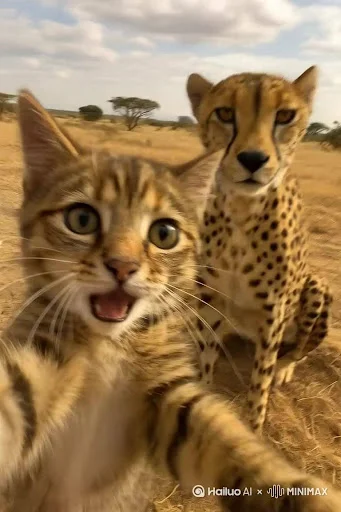The landscape of content creation has shifted dramatically with the emergence of AI-powered video generation tools. What once required expensive equipment, professional crews, and days of editing can now be accomplished in minutes with nothing more than a written description. Text-to-video AI technology is democratizing video production, making it accessible to anyone with an idea and the words to describe it. Whether you’re a solo entrepreneur building your brand, a teacher creating educational materials, or a marketer racing against tight deadlines, this technology offers a practical path to producing professional-looking videos without technical expertise.
This guide explores how text-to-video AI works and how you can use it effectively. You’ll discover the mechanics behind this technology, learn practical strategies for creating compelling videos, and understand where this tool fits best in your workflow. The goal isn’t just to explain the technology, but to give you actionable knowledge you can apply immediately to start generating videos that serve your specific needs.
Dive into more insights that connect directly with your interests today!
Understanding Text to Video AI
Text to video AI represents a fundamental shift in how video content gets created. At its core, this technology uses machine learning models trained on vast datasets of videos, images, and text to understand the relationship between written descriptions and visual content. When you input text, the AI interprets your words, identifies key concepts, and generates corresponding visual sequences that match your description. The technology bridges the gap between imagination and execution, allowing anyone to create video content without filming a single frame or mastering complex editing software. For content creators working alone, this means producing marketing videos during lunch breaks. For educators, it translates to converting lesson plans into visual explanations overnight. For businesses, it enables rapid prototyping of video concepts before committing to full production. The technology handles everything from scene composition to transitions, effectively serving as your entire production team in software form.
The Benefits of Using Text to Video AI
The most immediate advantage of text-to-video AI is speed. What traditionally takes days or weeks now happens in minutes, allowing you to respond to trending topics while they’re still relevant and produce multiple video variations to test different messages. Cost savings follow closely behind—you eliminate expenses for cameras, lighting equipment, studio rentals, and professional videographers. A single subscription often replaces an entire production budget. Beyond economics, this technology removes technical barriers entirely. You don’t need to understand frame rates, color grading, or video codecs. The AI handles these complexities while you focus on your message. For small teams and solo creators, this means maintaining a consistent video presence across platforms without burning out. You can produce educational content, social media clips, product demonstrations, and marketing materials using the same simple process: write what you want, let the AI generate it, and publish. The technology also enables experimentation without risk—test different storytelling approaches, visual styles, and messaging angles without committing significant resources to each attempt.

How Text to Video AI Works
The process begins when you submit your text prompt to the AI system. The algorithm first parses your input, identifying key subjects, actions, settings, and descriptive elements within your words. It breaks down sentences to understand not just what objects appear, but how they should move, interact, and transition. Next comes the generation phase, where the AI draws from its training data to create visual elements that match your description. It constructs scenes frame by frame, determining camera angles, lighting, and composition based on patterns it learned during training. The system then assembles these elements into a coherent sequence, adding transitions between scenes and ensuring visual continuity. Finally, the rendering phase compiles everything into a finished video file, applying final touches like color correction and audio synchronization if you’ve included sound elements. Modern systems accomplish this entire pipeline in minutes, though more complex or longer videos require additional processing time. The quality depends heavily on how well you describe your vision—specific details about mood, pacing, and visual style help the AI generate results closer to your intention.
Step-by-Step Guide to Using Text to Video AI
- Choose a Text to Video AI Tool
- Select a reliable and user-friendly AI tool.
- Consider factors like ease of use, cost, and features.
- Input Your Text
- Enter the text prompt you want to convert into a video.
- Ensure the text is clear and specific.
- Generate the Video
- Choose the desired video style and duration.
- Review the generated video and make adjustments if necessary.
Start by researching available text-to-video platforms and signing up for one that matches your budget and technical comfort level. Most platforms offer free trials, letting you test capabilities before committing. Platforms like HailuoAI provide accessible interfaces that simplify the generation process for users at all skill levels. Once you’ve selected your tool, craft your text prompt with specific details about what you want to see—describe the scene, actions, mood, and visual style rather than writing vague descriptions. Be explicit about elements like setting, lighting, and pacing. After entering your prompt, select parameters like video length, aspect ratio for your intended platform, and any style preferences the tool offers. Click generate and wait for the AI to process your request. When the video appears, watch it completely to identify areas needing adjustment. Most tools let you regenerate specific sections or refine your prompt for better results. Make iterative improvements until the output aligns with your vision, then download the final video in your preferred format for publishing.
Common Use Cases for Text to Video AI
Marketing teams deploy text-to-video AI to produce social media advertisements, product announcements, and promotional clips that maintain brand consistency across campaigns. Instead of waiting weeks for agency deliverables, marketers generate multiple ad variations in an afternoon, test them with real audiences, and iterate based on performance data. Educators transform lesson scripts into visual explanations, converting abstract concepts into animated demonstrations that students can watch repeatedly. Training departments in corporations use the technology to create onboarding videos, safety tutorials, and procedural guides without coordinating filming schedules or hiring production companies. Content creators on platforms like YouTube and TikTok leverage these tools to maintain consistent upload schedules, turning blog posts and scripts into video content that reaches broader audiences. Real estate agents generate property tour videos from listing descriptions, while nonprofits create awareness campaigns that communicate their mission visually. The technology serves anyone who needs video content regularly but lacks the time, budget, or technical skills for traditional production methods.
Tips for Optimizing Your Text to Video AI Output
The quality of your AI-generated videos depends largely on how you craft your input and refine your results. Start with descriptive, specific text prompts that paint a clear picture—instead of writing “a person walking,” describe “a woman in business attire walking confidently through a modern office lobby with natural sunlight streaming through floor-to-ceiling windows.” This specificity gives the AI concrete details to work with. Experiment with different video styles offered by your chosen platform, testing cinematic, animated, or documentary approaches to discover what resonates with your audience. Always review the generated video critically before publishing, checking for visual inconsistencies, awkward transitions, or elements that don’t match your intent. Most platforms allow regeneration of specific segments, so refine problem areas rather than accepting imperfect results. Consider breaking longer narratives into shorter, focused videos that maintain viewer attention better than extended sequences. Test your videos with a small audience before wide distribution, gathering feedback on clarity and engagement to inform future prompts and style choices.
Transform Your Content Creation with AI Video Technology
Text-to-video AI has fundamentally changed how we approach video creation, removing barriers that once made professional-looking content accessible only to those with specialized skills and substantial budgets. This technology empowers anyone with a message to transform their words into visual stories within minutes, whether you’re marketing a product, explaining a concept, or building an online presence. The key to success lies in understanding how to communicate effectively with these AI systems through clear, detailed prompts and being willing to iterate until your vision materializes on screen. As these tools continue advancing, they’ll become even more intuitive and capable, but the fundamental advantage remains constant: the ability to produce quality video content quickly and affordably. By incorporating text-to-video AI into your workflow now, you position yourself ahead of the curve, ready to meet the growing demand for video content across every platform and industry. Start experimenting today with the strategies outlined in this guide, and you’ll discover how this technology can transform your content creation process from a bottleneck into a competitive advantage.Don’t miss our top pick—trending insights that spark new perspectives.






